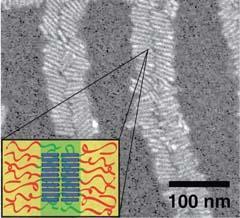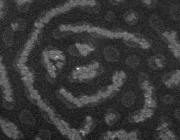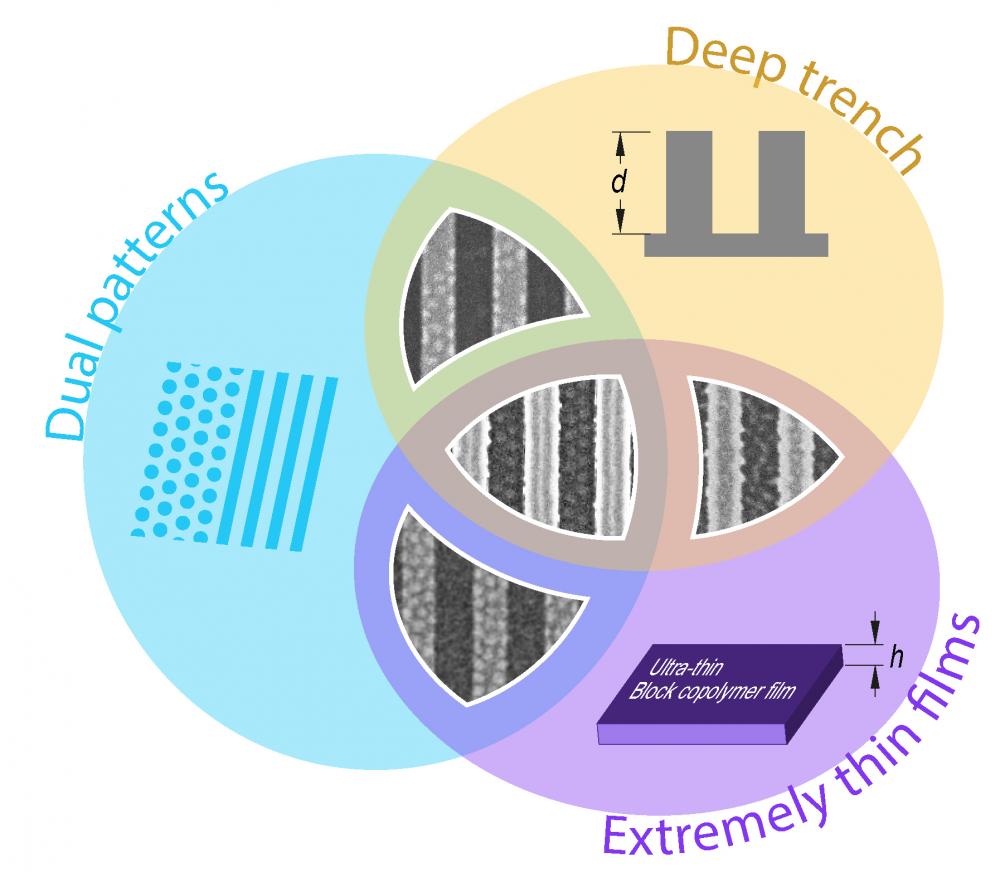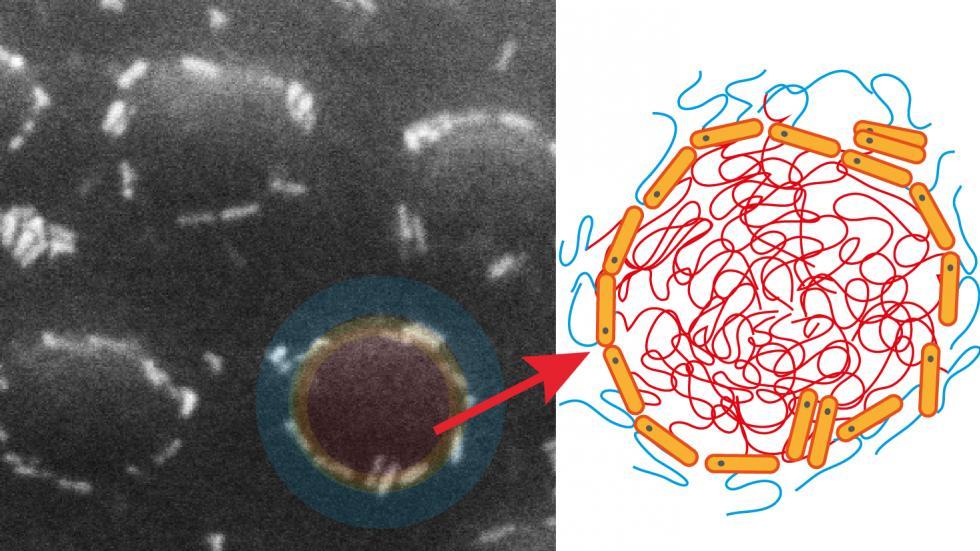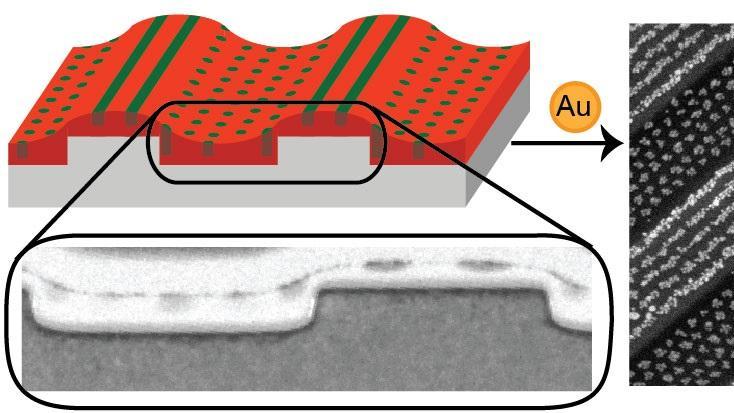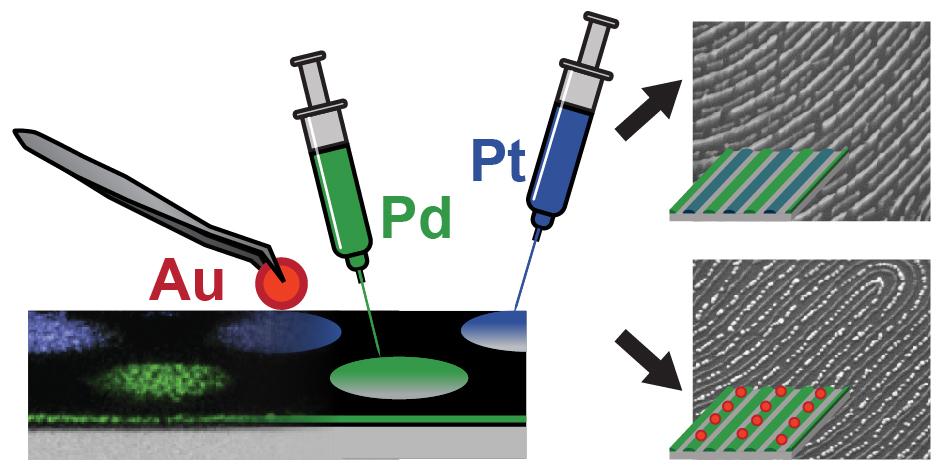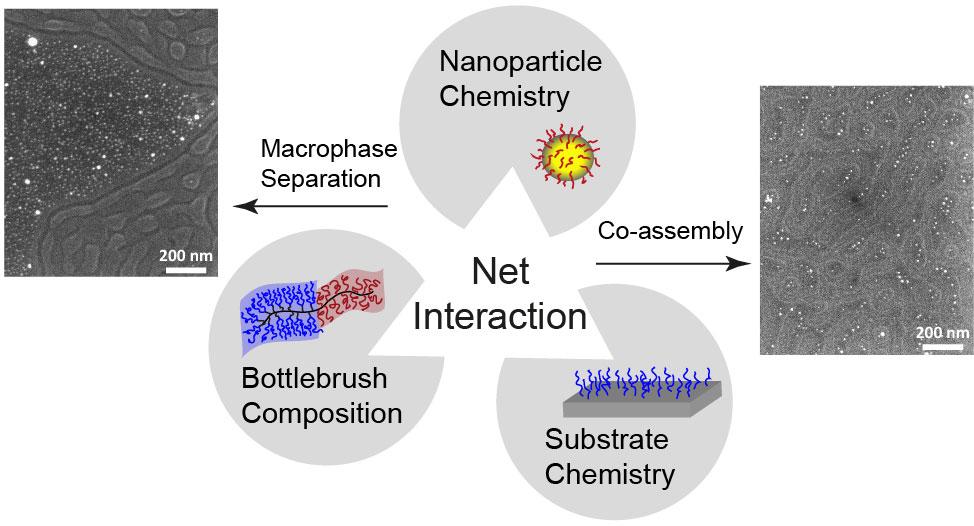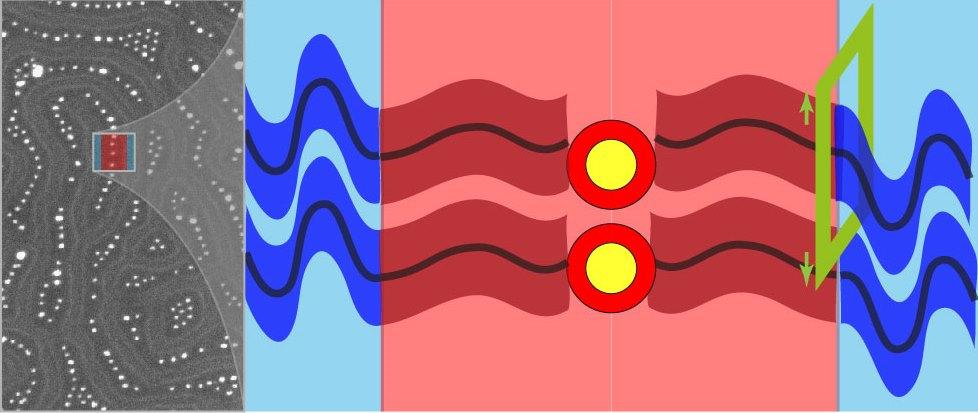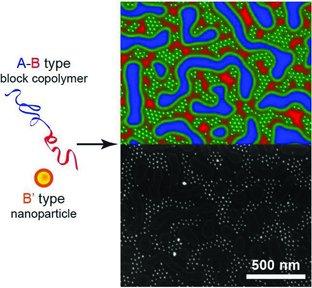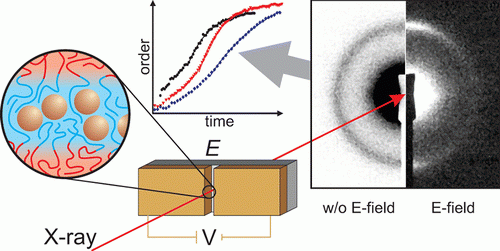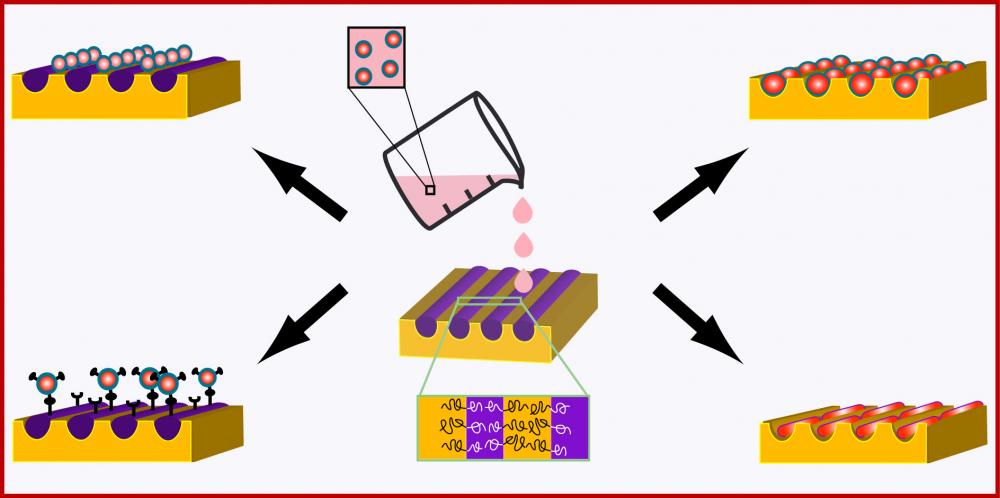Wagner, T. ; Oded, M. ; Shenhar, R. ; Böker, A. Two-dimensionally ordered AuNP array formation via microcontact printing on lamellar diblock copolymer films.
Polymers for Advanced Technologies 2017,
28, 623-628.
AbstractThe construction of nano-sized, two-dimensionally ordered nanoparticle (NP) superstructures is important for various advanced applications such as photonics, sensing, catalysis, or nano-circuitry. Currently, such structures are fabricated using the templated organization approach, in which the templates are mainly created by photo-lithography or laser-lithography and other invasive top-down etching procedures. In this work, we present an alternative bottom-up preparation method for the controlled deposition of NPs into hierarchical structures. Lamellar polystyrene-block-poly(2-vinylpyridinium) thin films featuring alternating stripes of neutral PS and positively charged P2VP domains serve as templates, allowing for the selective adsorption of negatively charged gold NPs. Dense NP assembly is achieved by a simple immersion process, whereas two-dimensionally ordered arrays of NPs are realized by microcontact printing (mu CP), utilizing periodic polydimethylsiloxane wrinkle grooves loaded with gold NPs. This approach enables the facile construction of hierarchical NP arrays with variable geometries. Copyright (C) 2016 John Wiley & Sons, Ltd.

